A saddle enhances rider performance and makes your riding experience comfortable. Therefore, it is crucial to choose the right one.
But how do you pick an ideal saddle for your horse?
Two factors are essential in your saddle choice—the horse type (gaited or non-gaited) and discipline.
Gaited and Western saddles are common today but have distinct features. These differences make them suit varying disciplines and events.
Explore the characteristics, uses, and benefits of Western and gaited saddles and their differences from this post.
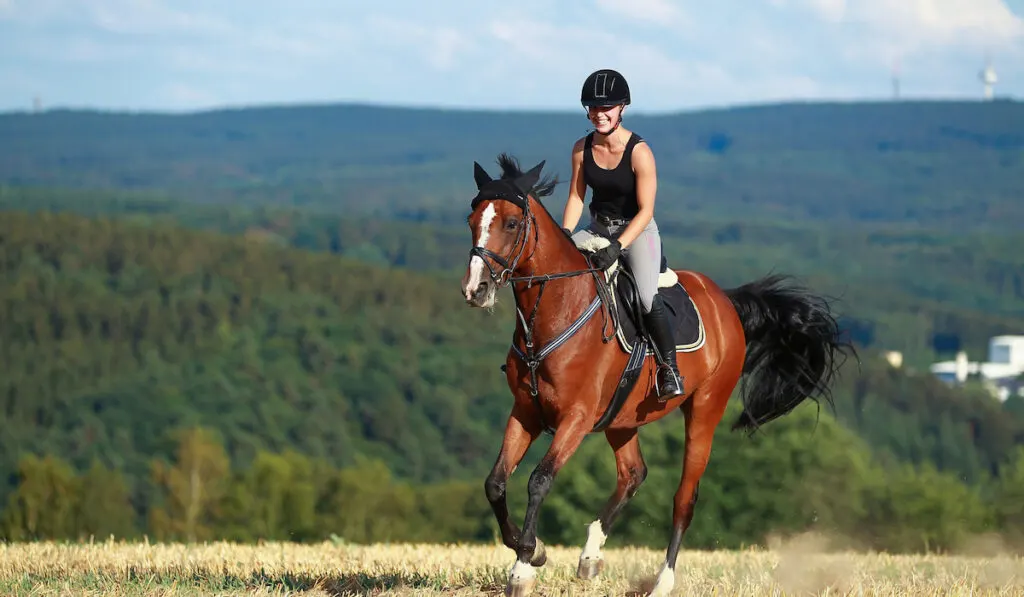
Table of Contents
Gaited Saddles
Gaited saddles are designed for gaited horses. Unlike normal horses with two-beat trot, gaited ones have a four-beat trot gait for full support and comfort while riding.
These saddles allow horses to move naturally. They have minimal restrictions on the body parts, such as the hind limbs, head, and shoulders.
Features
Gaited saddles have the following outstanding features.
- Flexible tree bars. You can adjust the tree bars and customize them to fit your horse. The bars move from front to back and side to side. This offers your horse comfort and freedom of movement.
- Forward placement. The front bars cup around the shoulder, reducing pressure on the loins. The placement also puts the rider in a bare-back position, distributing weight evenly.
- Therapeutic padding is placed under the tree bars to prevent sore formation on your horse’s back. This keeps it comfortable and helps you to endure long rides.
- Suspended leather ground seat to prevent tree bars from breaking.
- Free swinging stirrups to protect your ankles, pelvis, and hips from pressure and discomfort.
Benefits of a Gaited Saddle
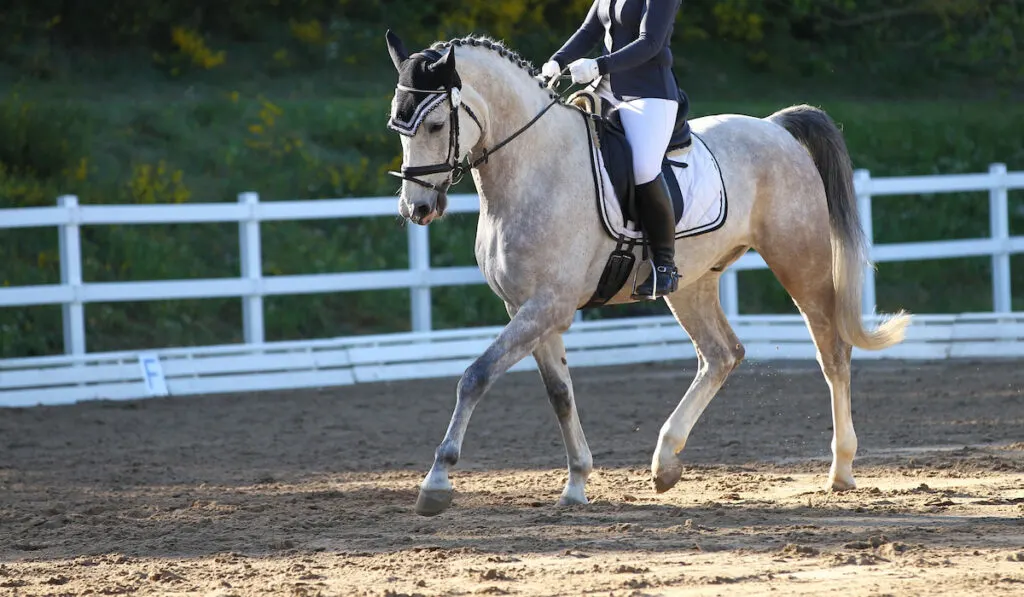
Gaited saddles enhance comfort for the rider and the horse. You enjoy the following benefits when using a gaited saddle.
- Comfort. Keeps you from developing aches and pains while riding.
- Ability to travel long distances without experiencing exhaustion.
- Suitable for beginners since the gait is smooth and adjustable.
- It has swinging stirrups that exert minimal pressure.
- Increases balance and stability, keeping you secure.
- Better performance when riding through rough terrain since the saddle improves your horse’s endurance.
Uses
Gaited saddles are suited for various disciplines. You can use them as follows:
- Performance riding. Their customized tree structure allows them to move freely without discomfort or pinching.
- Trial riding. The adjustable fit accommodates a range of motion through the back, shoulders, and neck.
- Endurance riding. The fitting system allows the horse to move freely and naturally. This enables it to cover long distances.
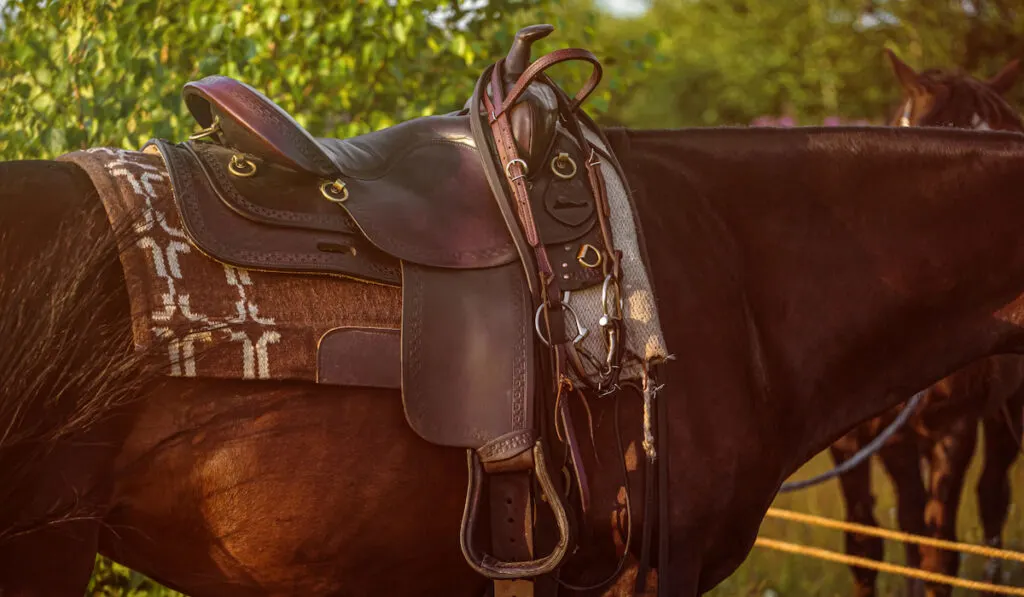
Western Saddles
A high cantle, a deep seat, and a horn characterize the Western saddle in the front part. Riders in Western disciplines use this saddle.
The horn helps you secure the rope when riding through rugged terrains and roping cattle.
Western saddles are designed to provide comfortable rides in rodeos, trail riding, and horseback competitions. They have a more intricate design with larger seats.
Riders use these saddles in Western riding styles.
Features
The following features make Western saddles suitable for various rides and events.
- A deeply padded seat for comfortable longer rides without getting tired.
- A wooden or synthetic tree spreads the rider’s weight evenly and reduces pressure points. This enables your horse to trot long distances.
- Adjustable tree bars to enhance fitting on your horse as it grows without exerting pain on pressure points.
- A raised cantle to provide support and stability while riding. This makes the saddle suitable for experienced and new riders.
- Fenders to hold your feet in place and minimize swinging.
- A breast collar that prevents saddle movement and offers you comfort over long rides.
- Metallic/wooden stirrups to support your feet while riding.
- Leather skirts to protect your feet from abrasion and injury.
The Western saddle comes in different designs to suit a spectrum of riders’ needs.
Benefits of a Western Saddle
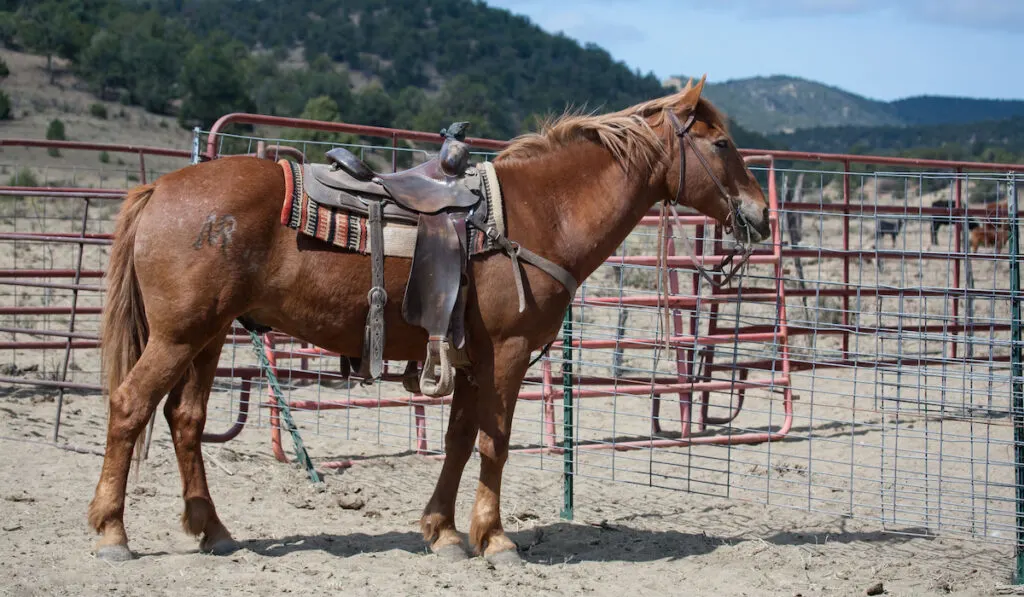
A Western saddle is larger and heavier than other saddles to provide maximum comfort to the rider and horse.
You enjoy the following benefits when using this saddle.
- Stability and comfort from the deeply padded seat and raised cantle.
- Ability to compete in a wide range of disciplines, including endurance riding and rodeos, since they are customizable for different needs.
- Ability to ride long distances without experiencing fatigue and discomfort.
- Value for your money since they are made of quality wood, synthetic material, and leather. Hence, they are long-lasting.
- Suitable for fashion and riding shows since they come in intricate designs and colors.
Uses
Western saddles are versatile. You can customize them to various disciplines, giving them a wide array of uses.
They include:
- Arena work. Because of its sturdy structure and deep seat.
- Ranching. Because they have high cantles and pommels to help you stay secure.
- Barrel racing. Their deep seat helps you stay secure during sharp and fast turns while racing.
- Trail riding. Because they are durable and rugged. These features offer you and your horse support for long trail riding.
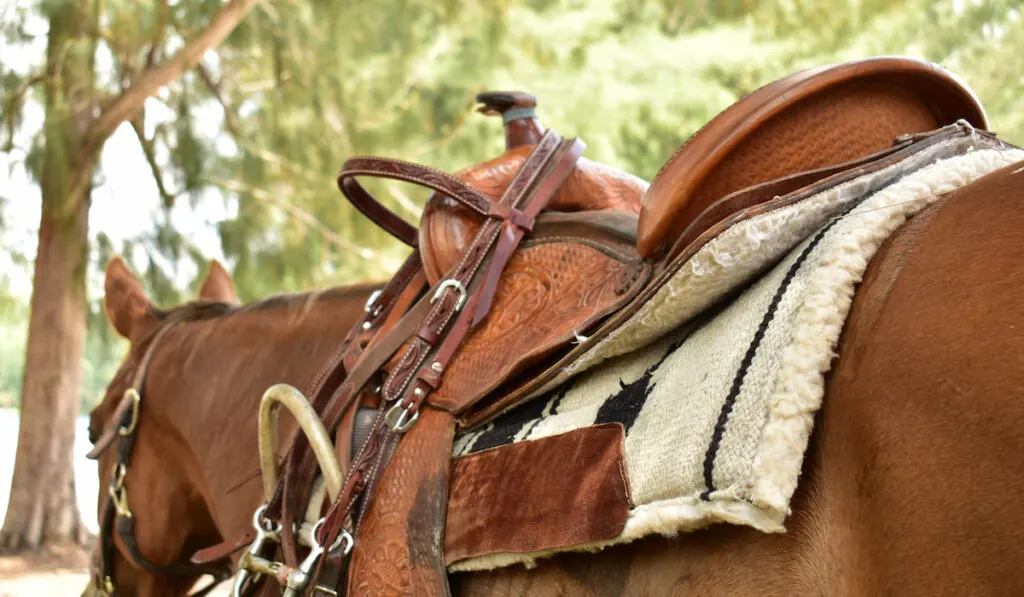
Differences Between Gaited and Western Saddles
Below are the differences between a gaited and a Western saddle:
| Feature | Gaited saddle | Western saddle |
| Structure | Flat seat. Low-level cantle. Made from lighter materials. | Large and deeper seat. High-level cantle. Large and heavy. |
| Horse breeds | Ideal for gaited horse breeds. | Suitable for horse breeds used in ranches, riding, and other disciplines. |
| Riding style | Gait movement. | Western riding. |
| Uses | Performance riding. Trial riding. Endurance riding. | Trail riding. Arena work. Roping. Barrel racing. |
How to Choose Between Gaited and Western Saddles?
Gaited and western saddles are designed for different functions. Both types have their benefits and drawbacks.
When choosing a saddle for your horse, its use is the primary factor to consider. For example, the Western saddle is ideal if you love trail riding.
The following factors are crucial when choosing between Western and gaited saddles.
- Horse and rider size. Choose a saddle that fits well to your horse and offers you a comfortable sitting space.
- Discipline. Your major discipline determines what saddle suits your horse. Choose the Western saddle if you like adventure and often engage in rodeo activities.
- Horse breed. Gaited saddles are designed for gaited horses, while the Western saddle is ideal for non-gaited breeds.
- Performance. Choose a saddle that least restricts the horse’s movement. For example, the united saddle allows your horse to move freely and is ideal for performance riding.
- Safety. Choose a saddle that keeps you secure even on long rides, especially when training.
- Durability. Examine the materials used for the different parts of the saddle, such as the tree bars, stirrups, and seat, and choose durable ones. This ensures safety while riding because the saddle cannot collapse and is economical.
Conclusion
Gaited and western saddle types have similarities and differences in structure and functionality. Choosing one for your horse depends on many factors, such as use and breed.
Note that there is no right or wrong saddle because they are both designed for different uses.
Before picking one, let your comfort, security, and that of your horse while riding come first.
Resources
- https://store.countyfarmtack.com/product-category/western-saddles/gaited-saddles/
- https://gaitedhorsesaddles.com/pages/key-features-of-our-gaited-saddles
- https://horseracingsense.com/types-of-western-saddles/
- https://saddleupcolorado.net/blog/the-different-types-of-western-saddles-and-their-purpose-/
- https://horses.extension.org/selecting-a-saddle/

